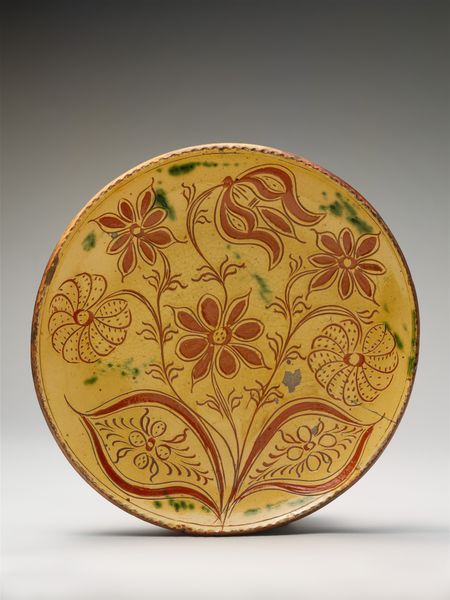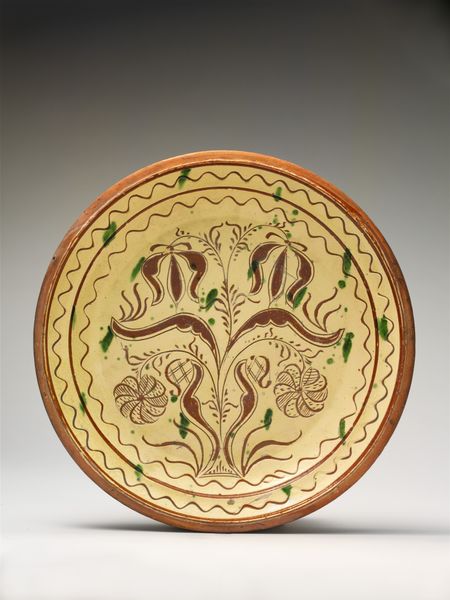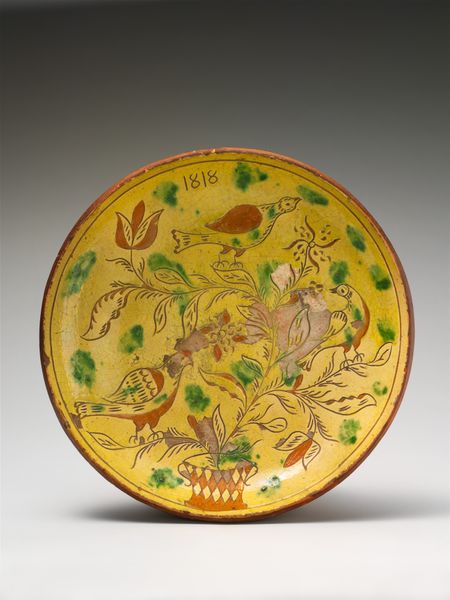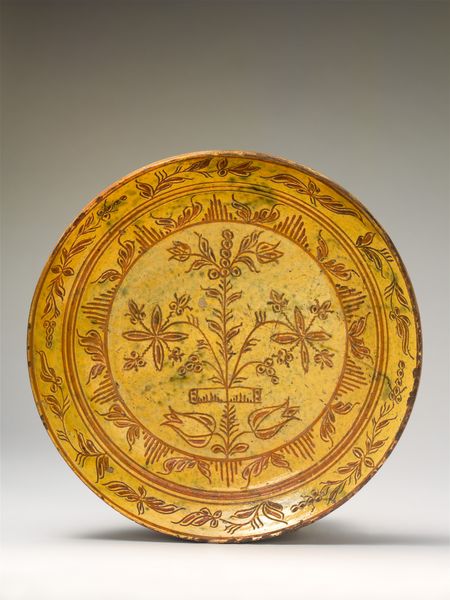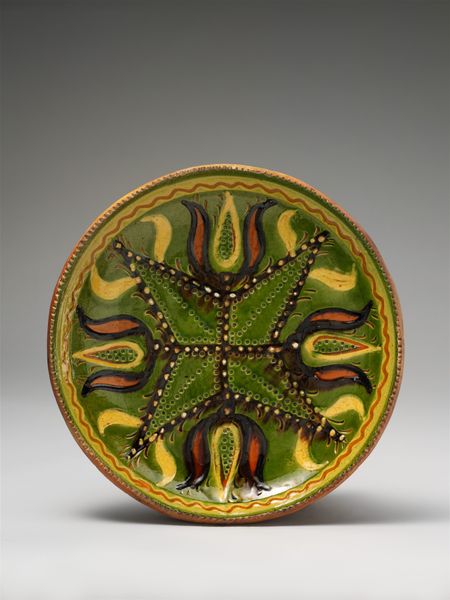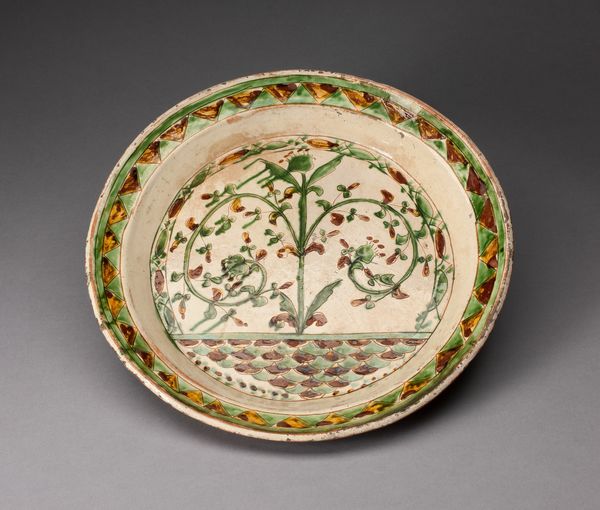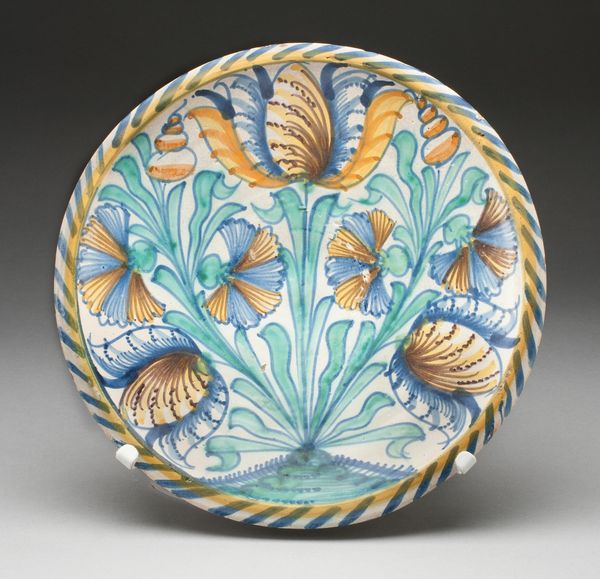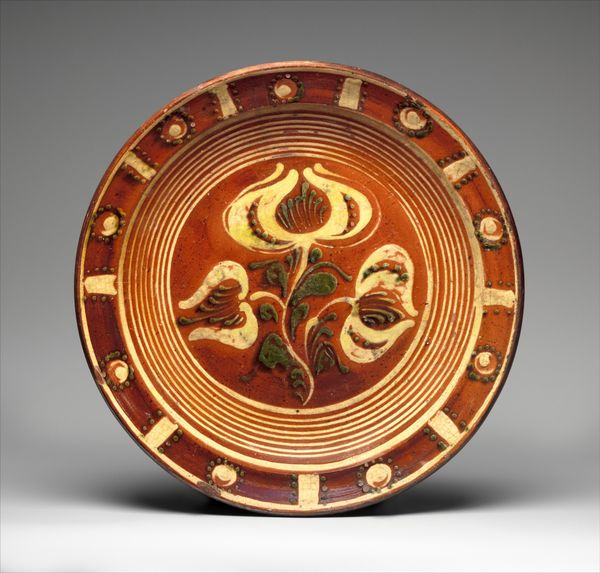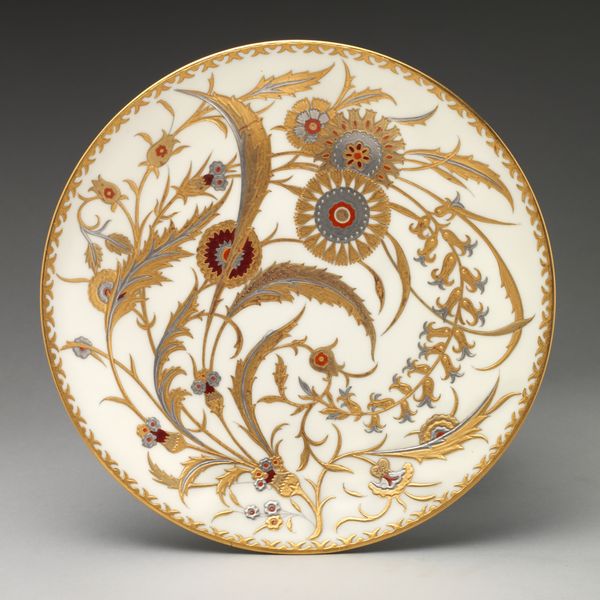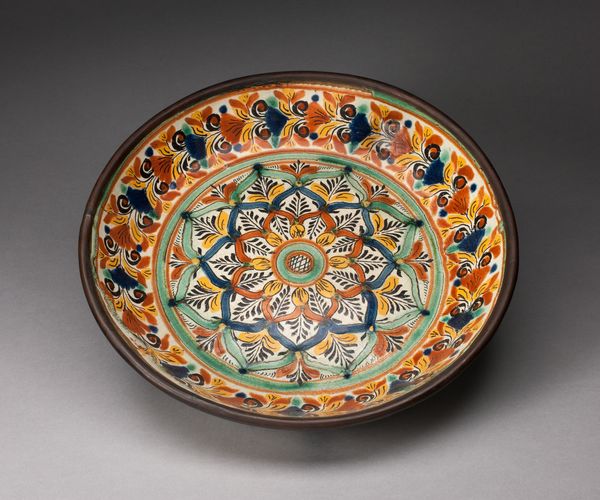
painting, ceramic, earthenware
#
painting
#
ceramic
#
flower
#
earthenware
#
stoneware
#
folk-art
#
ceramic
#
decorative-art
Dimensions: Diam. 11 in. (27.9 cm)
Copyright: Public Domain
Editor: So, this is an earthenware plate from 1830, attributed to John Monday. The colorful, folk-art design really jumps out – it’s charming! The painted flowers give it a lively feel, despite being on a rather humble material. What do you make of it? Curator: This piece exemplifies the democratization of art through readily available materials and the labor of artisans. The ceramic, while functional, is elevated through its painted decoration, blurring the lines between craft and fine art. Consider the social context: was this mass produced, or uniquely hand-painted? Editor: I see. It definitely looks hand-painted, you can see the individual brushstrokes, particularly in the flower details. And, you’re right, was this something affordable available to a large portion of the population, or something commissioned and a marker of status? Curator: Precisely! The choice of earthenware, the painting style—all point to the economic realities of the time. We should consider where John Monday was based, what trade networks he had access to, and how these materials shaped his artistic expression. Editor: It’s amazing how much we can glean from simply considering the materials and production process. I’d never thought about decorative objects like this in terms of labor before. Curator: These “simple” objects often hold more complex histories related to skill, access, and social value than more celebrated artworks. Editor: This plate really makes you think about art existing outside of museums and galleries. Everyday life aesthetics, like folk art, tell a unique story. Curator: Exactly, art within the reach of everyone, shaping lives and culture on an everyday scale. Thinking materially truly grounds art within history.
Comments
No comments
Be the first to comment and join the conversation on the ultimate creative platform.

